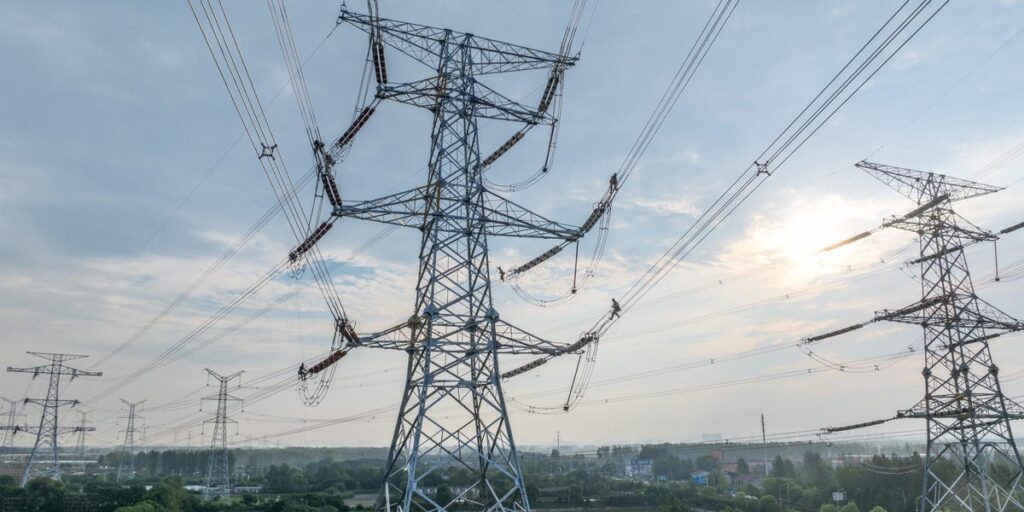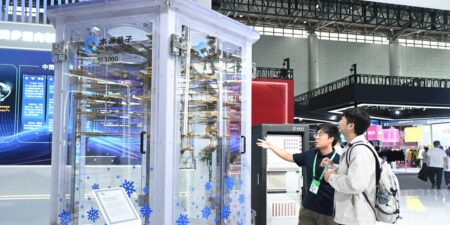In the span of less than two years, Core Scientific went from a bankrupt crypto mining company to a $9 billion acquisition target. How? By reinventing itself as an upstart player in the artificial intelligence-driven data center craze.
Only now, one of the company’s largest shareholders is urging other investors to vote down the deal — arguing that $9 billion isn’t nearly enough.
While a takeover battle between little-known data center firms might seem like an industry footnote, it speaks volumes about the vast infrastructure arms race taking place behind the AI boom.
Data centers provide the computing and storage necessary for AI, and operating them requires city-sized loads of electricity.
This and other rising power demands have outstripped the ability of grids nationwide to keep up, lifting the fortunes of data center platforms like Core Scientific that have access to electricity and the rights to contract more in the near term.
“There is a lot of value in being able to secure power and surmount the roadblock that everyone in the industry is facing, which is access to power,” said Kevin Dede, an equity analyst at H.C. Wainwright who covers Core Scientific.
A $9 billion M&A deal on the rocks
In July, CoreWeave, a roughly $60 billion publicly owned data center company, announced that it had reached an agreement with Core Scientific to merge in an all-stock transaction that, at the time, valued Core Scientific at roughly $9 billion.
But in early September, one of Core Scientific’s largest shareholders released a draft proxy letter urging stock owners to vote against the merger because it wasn’t lucrative enough.
Among the chief attributes that shareholder, the investment firm Two Seas Capital, ascribed to Core Scientific was its portfolio of power.
“Core Scientific has a critical first-mover advantage, significant scale and ready access to low-cost power, which we believe positions the company to emerge as a clear leader and compound growth for years to come,” it states in its letter.
The merger, which Dede said is now “in peril,” would expand CoreWeave’s existing capacity to more than 2 gigawatts, about a third of the electrical capacity of New York City on an average day.
In a statement about the merger, a CoreWeave spokeswoman said that the company is “confident in securing the approvals necessary to complete the acquisition of Core Scientific” and that the deal will “strengthen our ability to meet the extraordinary demand we see.”
A recent industry report suggests that limited access to power is already weighing down data center expansion. Commercial real estate services firm CBRE said that roughly 5.2 gigawatts of new data centers were underway in prime US markets in the first half of 2025, a 17.5% decline in the industry’s construction pipeline from the same period a year prior.
Pat Lynch, the global head of CBRE’s data center solutions team, said the decrease was due mainly to the scarcity of electricity.
“It is not a lack of demand, it’s a lack of supply, specifically utility power,” Lynch said. “Absent of power and equipment limitations, that supply delivery number would be significantly higher.”
Enormous growth and a premium on electrons
The consulting firm McKinsey estimates that there will be 80 gigawatts of demand for data centers by 2030, a more than threefold increase from today, and that $2.8 trillion will be spent on data center development by the end of the decade.
The industry’s dramatic growth has enchanted institutional investors.
John Dinsdale, the chief analyst and research director at Synergy Research Group, a data firm that tracks the data center industry, said that $46.1 billion of data center merger and acquisition deals have closed in 2025, and that $34 billion more is pending. If all of the pending deals were to close by the end of the year, 2025 would set a record for data center deals by dollar volume.
Major investors are picking acquisition targets with hefty portfolios of gigawattage.
Apollo recently announced it had acquired a majority interest in the prominent data center company Stream, stating that the company “controls over 4 gigawatts.”
Investors Snowhawk and Nuveen announced in July that they had purchased an undisclosed stake in Prime, another notable data center operator. The announcement said that Prime has a “4 gigawatt roadmap of power across top-tier markets” with more than a gigawatt “deliverable between 2025 and 2028.”
Biff Ourso, Nuveen’s global head of infrastructure, said that power was a key attribute the firm looks for in the data center deals it pursues, including the transaction with Prime.
“It’s a critical piece of the equation for us: what is the development pipeline and what is the contracted power,” Ourso said. “Access to powered land for development, that is the big gating issue for the industry today.”
In a report, Goldman Sachs said that despite the swell of new data center development, supply will lag demand by about 10% per year through 2028, in part because of the grid constraints.
“A lack of capital is not the most pressing bottleneck for AI progress — it’s the power needed to fuel it,” Dan Dees, the co-head of global banking and markets at the bank, wrote in the report.
The scarcity of electricity has also pushed more players to farther flung areas of the country that haven’t traditionally seen a lot of data center development
In June, Applied Digital, a data center developer, announced that CoreWeave had agreed to lease 250 megawatts of space at a facility Applied Digital is building in Ellendale, North Dakota, with a right to expand its operations at the campus by 150 megawatts.
By August, Applied Digital announced that Coreweave had triggered that expansion option.
“In my mind, it’s illustrative of the intense demands across the industry and how competitive it is,” Dede said of the CoreWeave’s decision to grow in Ellendale.
Read the full article here















